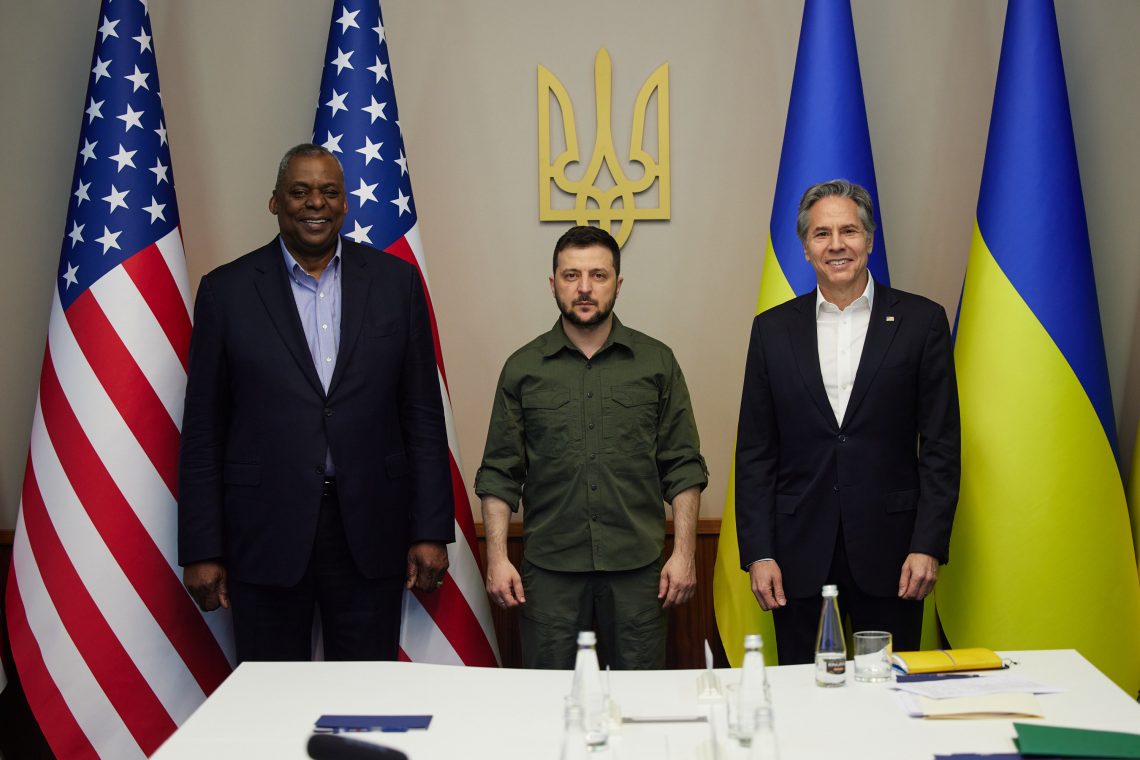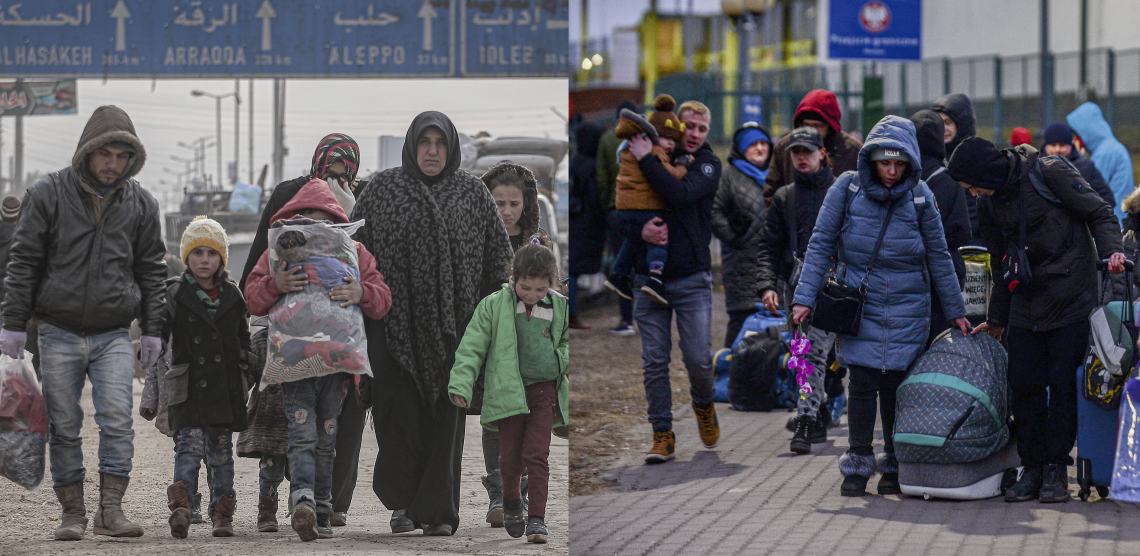U.S. and Russia cannot reconcile their worldviews
U.S. foreign policy has tried to avoid confrontation with Russia. Even now, with the Kremlin’s war on Ukraine, American policymakers are primarily worried about the harm to Europe.

© Getty Images
In a nutshell
- America regards Russia as a declining but menacing power that threatens Europe
- The adversarial relationship is likely to persist, although the U.S. has other priorities
- Many U.S. policymakers see China and Russia as part of an integrated global threat
The views from Moscow and Washington could not be more at odds. There is little question that Russian President Vladimir Putin sees the United States at the root of the global challenges faced by Russia. In contrast, the steady consensus in Washington is that Russia represents a regional threat to the stability of Europe. Absent this pressure on Europe, the U.S. would be largely indifferent to the fate of the Putin regime. The contrasting views of one another are one factor that will likely contribute to the continued impasse in U.S.-Russian relations, regardless of the outcome of Russia’s war against Ukraine.
Strategic disinterest
The post-Cold War American view of Russia has always been ambivalent. When he proposed his “New World Order,” President George H.W. Bush (1989-1993) argued for continuity over change in the post-Soviet space. Most notably, in his August 1, 1991, “Chicken Kyiv speech,” he was skeptical of Ukrainian independence and warned against “suicidal nationalism” among the former Soviet states. There was really very little “new” in President Bush’s world perception.
American interest in post-Soviet Russia quickly evaporated as the prospects for reforms leading to a more liberal Russia fizzled in the 1990s and some of its former republics, such as the Baltic nations, and former allies in Central Europe, took a pro-European course independent of Moscow.
While many Russians saw the U.S-led intervention in the Balkans (1994), the war against Serbia (1994) and NATO enlargement with the Czech Republic, Hungary and Poland (1999) as explicitly anti-Moscow policy, the U.S. saw these events as consolidating stability in Western Europe.
The U.S. approach was authentically bipartisan, seeing only slight differences in Republican or Democratic administrations. It was reflected in the fact that U.S. military forces continued to decline consistently over 30 years because of the reduced perceived threat from Russia.
When President George W. Bush (2001-2009) withdrew from the Anti-Ballistic Missile (ABM) Treaty in 2002 and proposed deploying missile defense systems in Europe, the initiative was aimed at an Iranian missile threat, not Russia.
Presidential candidate Mitt Romney was roundly mocked in the 2012 presidential debate for suggesting Russia was America’s major threat. Indeed, President Barack Obama (2009-2017) made a reset of relations with Russia a centerpiece of his administration.
In many areas outside Europe, the U.S. seemed inclined to accept or only lackadaisically address Russian interests.
President Donald J. Trump emphasized improving collective security and energy security, including opposition to the Nord Stream 2 pipeline in the transatlantic relationship. The Trump administration emphasized China and transnational terrorism more than Russia. Even the U.S withdrawal from the Intermediate-Range Nuclear Forces (INF) Treaty in 2019 was described as an initiative to counter Beijing by punishing Russia for cheating on the treaty.
Indeed, the U.S. seemed inclined to accept or only lackadaisically address Russian interests in many areas outside of Europe. The U.S., for example, never seriously questioned Russian claims in Syria and even coordinated regional activities with Moscow. The U.S. proved largely indifferent to Russian meddling in Libya and Venezuela. The U.S. has never raised serious objections with India, an increasingly close American partner, over its relationship with Russia.

From Russia without love
From the U.S. perspective, the “threat of encirclement” and “encroachment” narratives are Russian creations and not a reflection of American strategy. This opinion is largely bipartisan.
There has always been a faction in the U.S. that has sided with the Russian narrative, but it remains small and stagnant. A clear example is the viewership of RT America (Russia Today), which carries a strong pro-Kremlin narrative. Still widely available in the U.S., RT does not attract a large audience or have an influential social media presence. If anything, its popularity as an international news source has been in decline for the last two decades. The dominant perspective in America is that Russia’s bellicosity is a conscious choice of Mr. Putin’s foreign and security policy and not a reaction to Western provocation.
The most likely U.S. strategy is to continue attempting to weaken Russia, so it is a less valuable partner for China.
The prevailing opinion in the U.S. is that current Russian policy is reflected in shifts since 2014, the start of the Kremlin’s war on Ukraine. The U.S. view is that President Putin assessed that America was withdrawing from Europe and that Europe was politically, economically and culturally fractured with a declining capacity for self-defense. These circumstances, the Kremlin reasoned, created a historic opportunity for Russia to reassert traditional dominance in the post-Soviet states and Central Europe. Washington shared this conclusion in a largely bipartisan way, though there was widespread disagreement on the appropriate response. Options ranged from calls for further disengagement in Europe to reasserting NATO’s primacy to accommodating Russia as a hedge against growing Chinese influence.
The asymmetry of interests and perspectives between Washington and Moscow is unlikely to change anytime soon, so an adversarial relationship between the two will likely persist. Indeed, growing European concerns about the Russian menace will only reaffirm the American view that Russia is a persistent threat to the stability of the transatlantic community.
Henry Kissinger’s recent proposal that the U.S. find some agreement with Russia was largely decried in the U.S. by a broad spectrum of political leaders. This reflects the reality that the U.S., in the near term, is not going to accommodate Russia’s worldview.
Scenarios
The most likely scenario is that the U.S. and Russia will remain at odds over all critical regional issues, including energy security, arms control, Ukraine, sanctions, NATO enlargement and conventional forces.
The one wild card in relations is the U.S. assessment of the Russian-China relationship. There are persistent calls in the U.S. to pivot to Asia and leave Russia as Europe’s problem. Others suggest an accommodation with Moscow to undercut relations between Russia and China. Neither of these approaches is likely to be adapted in the near term. The U.S. may instead define Russia and China as an integrated global threat, though there is some disagreement on this approach.
Nevertheless, the most likely U.S. strategy is to continue to attempt to weaken Russia, so it is a less valuable partner for China. That, however, remains a secondary goal for Washington. The consensus in Washington is that the U.S. needs a strong and stable Europe as a better partner to offset China.
With that in mind, U.S. policies look much more to be about protecting Europe from destabilizing actions by Moscow than weakening Russian military, economic, and political might. In this respect, U.S. policy toward Russia reflects more continuity with America’s long-term approach to Moscow in the post-Cold War world than changes wrought by the war in Ukraine.
The war against Ukraine seems more a reminder of the importance of long-standing U.S. policy than a new approach. It reflects the U.S. view of Russia as a declining power with limited relevance in global competition, which is unchanged.







